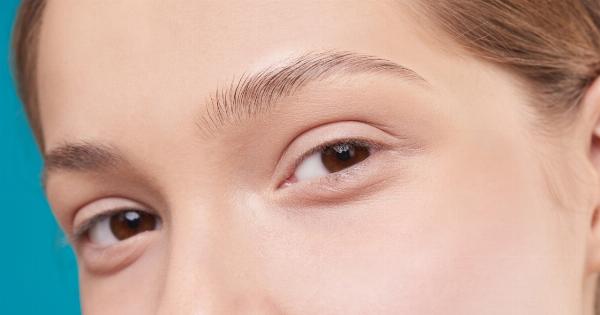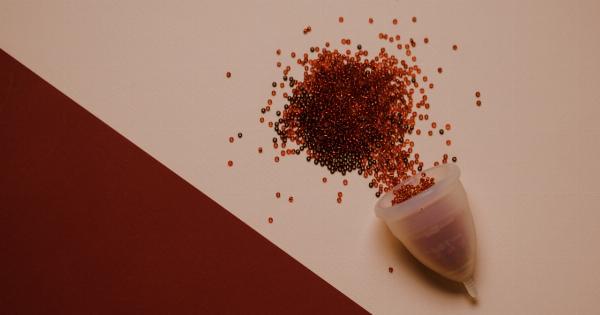As a woman, you may have noticed that your skin goes through changes during your menstrual cycle. Hormonal fluctuations can affect the skin and cause breakouts or changes in texture.
Understanding the relationship between skin and menstrual cycles can help you manage these changes and maintain healthy skin.
The Menstrual Cycle and Hormones
The menstrual cycle is the monthly cycle of changes that a woman’s body goes through in preparation for pregnancy. The cycle is controlled by hormones, primarily estrogen and progesterone.
These hormones are produced by the ovaries, a pair of organs located on either side of the uterus.
The menstrual cycle has three phases:.
- Follicular phase: This phase begins on the first day of menstruation and lasts for about 14 days. During this time, the body prepares for ovulation by thickening the lining of the uterus. The follicle-stimulating hormone (FSH) and luteinizing hormone (LH) are released from the pituitary gland to stimulate the ovaries to produce estrogen.
- Ovulatory phase: This phase occurs around day 14 of the menstrual cycle. One of the ovaries releases an egg, which travels through the fallopian tube to the uterus. Estrogen levels are high during this phase.
- Luteal phase: This phase begins after ovulation and lasts for about 14 days. The ovaries start to produce progesterone to prepare the uterus for pregnancy. If pregnancy does not occur, the levels of estrogen and progesterone drop, leading to menstruation.
The Skin and Hormones
Hormones play an important role in the health of the skin. Estrogen, for example, helps to maintain the thickness and elasticity of the skin. It also promotes collagen production, which reduces the appearance of fine lines and wrinkles.
Progesterone, on the other hand, can cause the skin to become oilier and more prone to breakouts.
The skin also contains receptors for androgens, a group of hormones that includes testosterone. Androgens can stimulate the sebaceous glands, leading to the production of more oil. This can result in acne and other skin problems.
How Menstrual Cycles Affect the Skin
During the menstrual cycle, the levels of estrogen and progesterone in the body fluctuate. These hormonal changes can affect the skin in different ways.
Pre-ovulatory phase (Days 1-14)
During the follicular phase, estrogen levels are rising, which can lead to clearer skin and a more even skin tone. Estrogen can also help to reduce inflammation, which can prevent breakouts.
Ovulatory phase (Day 14)
During ovulation, the levels of estrogen and luteinizing hormone (LH) surge in the body. This hormonal surge can lead to a temporary increase in oil production, which can cause breakouts.
It is also during this time that the skin may appear more radiant due to the increase in blood flow and oxygen to the skin.
Post-ovulatory phase (Days 15-28)
During the luteal phase, the levels of progesterone increase, which can cause an increase in oil production in the skin. This can lead to acne and other skin problems.
Additionally, the skin may appear dull and tired due to the effects of progesterone on the skin.
Tips for Managing Skin Changes During Menstrual Cycles
Managing the skin changes during menstrual cycles involves taking care of the skin and managing hormonal fluctuations.
Cleanse regularly
Cleansing the skin regularly can help to remove excess oil and dirt from the skin, preventing breakouts. Use a gentle cleanser that is appropriate for your skin type.
Moisturize
Moisturizing the skin can help to prevent dryness and irritation. Choose a moisturizer that is appropriate for your skin type and use it regularly.
Use non-comedogenic products
Non-comedogenic products do not clog pores, which can help to prevent breakouts and other skin problems. Look for products that are labeled as non-comedogenic.
Avoid touching your face
Touching your face can transfer bacteria and oil from your hands to your skin, which can cause breakouts. Avoid touching your face as much as possible.
Manage stress
Stress can cause hormonal fluctuations, which can affect the skin. Practice stress management techniques, such as yoga or meditation, to reduce stress levels.
See a dermatologist if necessary
If you are experiencing persistent skin problems during your menstrual cycle, see a dermatologist. They can offer treatments and advice to help manage your skin concerns.
Final Thoughts
Understanding the relationship between skin and menstrual cycles can help you manage the changes that occur during your cycle. By taking care of your skin and managing hormonal fluctuations, you can maintain healthy, radiant skin throughout the month.































